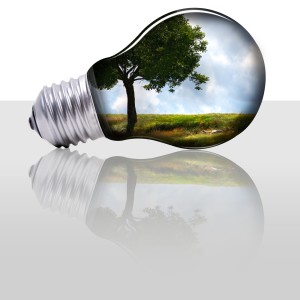Editor’s Note: For an alternative viewpoint, please see: Counterpoint: The Markets Should Determine Our Future Energy Sources
Over the last year, cities and towns throughout the United States have assumed a new mantle of leadership: establishing bold commitments to move away from dirty fuels and repower their communities with 100 percent clean, renewable energy sources like wind and solar.
Community by community, local leaders are demonstrating that a transition away from dirty fuels like coal and fracked gas and toward 100 percent clean energy is already happening.
Today, more than 50 cities and towns in the United States have committed to move to 100 percent clean, renewable energy. From big cities like Atlanta and San Diego to small towns like Abita Springs, La., and Hanover, N.H., cities are switching to 100 percent clean energy because it’s better for them — clean energy creates local jobs, cuts pollution, and saves homes and businesses money. More than 150 mayors, Democrats and Republicans, have also pledged to power their cities entirely with renewable energy.
Cities are not alone in this pursuit. Some states already source significant amounts of energy from clean sources. More than a third of all power in Iowa, for example, comes from wind energy. More than100 companies have also pledged to source 100 percent of their energy from renewables, including Apple, General Motors, Walmart and Johnson & Johnson.
More than 70 percent of the world’s energy experts have agreed that transitioning to 100 percent renewable energy is achievable, according to the Renewable Energy Policy Network. The real question should not be whether clean energy can replace fossil fuels but how can we do so in a way that best serves the public interest.
The transition to 100 percent clean energy is an opportunity to address inequality and environmental injustice in our communities. Today’s extractive energy system disproportionately threatens low-income communities and communities of color with rising costs and pollution. We must ensure that the transition away from fossil fuels improves social equity and benefits everyone, particularly those hit first and worst by dirty fuels.
Local commitments to transition to clean and renewable energy are already helping to shape the future. On the heels of Portland, Ore., and surrounding Multnomah County committing to 100 percent clean energy in June, plans by the local utility to construct two new fracked gas power plants were defeated, and the utility now wants to pursue clean energy investments instead. In St. Louis, the local utility recently cited the city’s commitment to 100 percent clean energy by 2035 when it proposed a new program to expand access to wind power.
Realistically, moving to 100 percent clean energy won’t happen overnight. We cannot simply shut down all of our fossil fuel power plants and switch on the renewables. Clean energy technologies will need to continue to scale and adapt, particularly energy storage and the responsiveness of our electrical grid.
At the same time, though, we know that clean, renewable energy resources are abundant and have the potential to meet all of our energy needs without the risks from fossil fuels. Wind and solar don’t produce the pollutants that contribute to so many human diseases — from asthma to cancer — nor do they contribute to climate change.
The advantages of switching to clean energy are clear. What most people don’t realize, though, is that clean energy is also increasingly affordable compared with both fossil fuels and nuclear energy. In fact, clean, renewable energy is now the least-expensive option, on average, for new electricity capacity around the world, according to Bloomberg New Energy Finance. For the past several years, more clean energy has come online in the United States from renewable energy than from traditional fossil fuel sources. This trend has an added benefit: The more clean technology we install, the faster prices will drop.
As the transition away from dirty fuels continues to take shape across the country, it’s up to all of us to determine what a true clean energy economy looks like, who benefits from it, and how we will get there in a way that empowers everyone in our communities.

